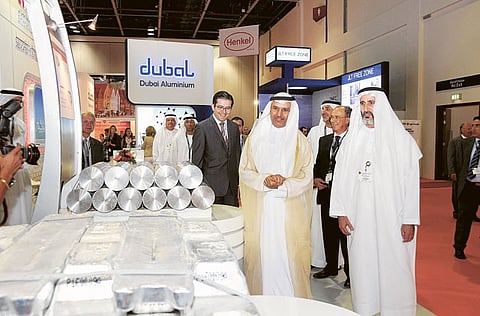Aluminium extrusion firms to benefit from GCC railway
Demand to grow 2%-3% with Projects in Qatar giving industry boost

Dubai: The GCC railway project has the region's aluminium extrusion companies rubbing their hands in glee at the thought of the lucrative business potentially coming their way, given the relatively infant downstream industry in the Gulf, industry insiders said.
"The main body of train wagons and stations is made of aluminium… a single train compartment is made of seven tonnes of aluminium," according to Madar Al Mekdad, General Manager of Gulf Extrusions.
"We will be involved with GCC rail and dealing with the train manufacturers... They should insist on using local companies," he added.
Political unrest in the region, a natural disaster in Japan and construction sector weakness in Dubai have taken their toll on the Gulf's aluminium industry, he said. "Demand for aluminium extrusions will grow but only 2 to 3 per cent a year. Projects in Qatar for the World Cup will boost the aluminum industry."
The region must focus on creating more downstream production opportunities — an area which investors need to pay attention to, he said.
Gulf Extrusions will open a new plant near Emirates Aluminium in Abu Dhabi by 2013 with a production capacity of 50,000 tonnes a year for locomotive and industrial products, Al Mekdad said. This will be a joint venture with Abu Dhabi Basic Industry Corporation (ADBIC) with 50 per cent ownership for each.
Aluminium produced in the UAE and the region is used by international car and plane manufacturers. Gulf Extrusions exports rail guides for the sun roofs of cars such as Jaguar, Land Rover and Range Rover. They also supply Halliburton with tubes for testing oil rigs.
Local aluminium is also used for architecture purposes and can be found in windows, doors, facades and kitchen cabinets.
Ninety per cent of the GCC downstream production goes to construction and during the construction downturn aluminium extrusion companies were operating at 50 to 60 per cent capacity in 2010 and 2009, he said.
Some of the major challenges facing the Gulf aluminium industry include the availability of natural gas required to produce aluminium, importing raw materials as global commodity prices soar and developing Gulf talent on the technical side of production, said Mahmoud Daylami, General Secretary of the Gulf Aluminium Council.
Still, industry representatives were optimistic about the role of the Gulf producers in meeting the increasing global demand for aluminium.
By 2020, the world is expected to consume 70 million tonnes of aluminium compared to the current 42 million tonnes and demand is now increasing by 5 per cent every year — the equivalent of 2 or 3 smelters a year, Daylami said. "Somebody has to fill that gap."
Currently Gulf countries export 80 per cent of their production mainly to Eur-ope and the Far East.
Gulf countries invested $40 billion in the aluminium industry, with Saudi Arabia adding another $10.5 billion by 2013 for its new smelter, he said. By 2015, Gulf nations plan to produce over 5 million tonnes a year or 12 per cent of the world aluminium production, up from its current 3.5 million tonnes.
"Aluminium is one of the major foundations of industrial diversification in the GCC," he said, pointing to the ancillary industry of SMEs that can grow around smelters and downstream manufacturers.
Aluminium production contributes 4 to 12 per cent of the GDP of the various Gulf countries. "Economic diversification is essential. There is more emphasis now to expand the industrial base and aluminium is part of that strategy."
The UAE is spending Dh20 million to Dh30 million a year training Emiratis in administrative and technical aspects of aluminium production, he said.
Sign up for the Daily Briefing
Get the latest news and updates straight to your inbox


